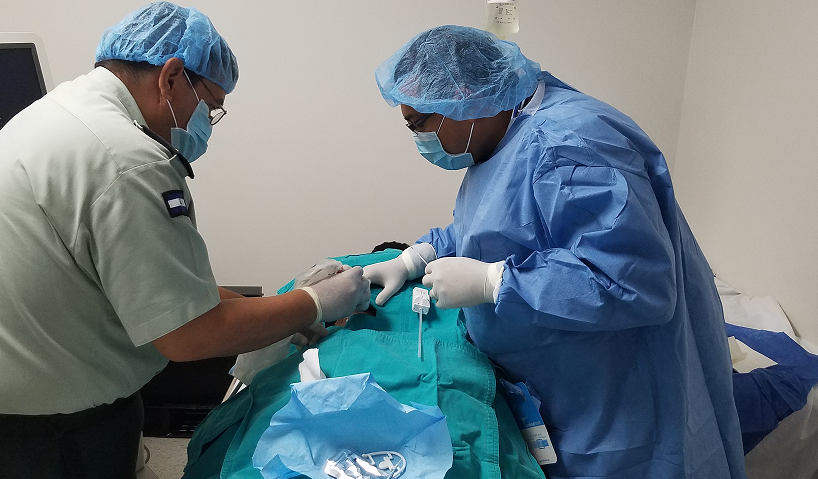On the path to solving a medical mystery in Nicaragua
Recently, doctors from all over the world convened in Mexico at the World Congress of Nephrology, organized by the International Society of Nephrologists, to discuss the serious impact diabetes and kidney disease are having across Latin America. One of the studies presented at the conference was about the ongoing epidemic occurring in Nicaragua.

“Essentially there has been an epidemic of kidney disease in Central America called Mesoamerican nephropathy and so far, no one has been able to figure out what was causing it. It’s been going on for decades now with about 20,000 deaths estimated. Sadly, based on what we’ve seen in the field, we believe that is a very low estimate,” said Dr. Kristy Murray, associate professor of pediatrics-tropical medicine at Baylor College of Medicine and principal investigator on the study. Other investigators include Baylor’s Dr. Rebecca Fischer, postdoctoral associate with pediatrics-tropical medicine, and Dr. Sreedhar Mandayam, associate professor of nephrology.
In the area of Nicaragua where investigators have been doing their research, the kidney disease epidemic started sometime in the late 1990s and has been unrelenting since. Those impacted the most by the disease are agricultural workers, specifically those who have a lot of contact with water and soil.
Over the past two years, the team has found over 500 more acute kidney injury cases in a highly affected area in Nicaragua. The team has also been reviewing kidney disease cases that had been diagnosed over the past couple of decades. Based on the clinical evaluations done of past patients and on their new findings, the team says that the kidney disease cases are likely caused by some sort of infection or exposure to toxins occurring in the fields.

“It is also possible that they are being exposed to this toxin or infection over and over again and the kidney can only take the injury so many times before they start giving up,” Fischer said. “It may not just be one needle in the haystack, there could be a few needles in there occurring together.”
The Baylor team has been working closely with physicians and staff at the occupational health clinic and hospital where they are conducting their investigation. To identify those who had kidney disease, the team partnered with local physicians who treat workers in the area, and Mandayam reviewed the creatinine levels in the blood of identified cases.
“Creatinine is a substance, some call it a toxin, that your muscle cells produce. Your kidneys are supposed filter and eliminate this toxin from the blood,” said Mandayam. “We know that a normal level is around one. We use the creatinine level and estimate from that a kidney function parameter. That means if the creatinine level is at a one there is one hundred percent kidney function. If the creatinine level is at two, there is probably 50 percent kidney function.”
The epidemic of kidney disease has not only impacted the individual health of people in the area, it has had a devastating impact on the community as a whole.
“Our focus for the last couple of years has been on this one heavily affected area in Nicaragua because the medical infrastructure is excellent. The tools are there to help us better understand what is going on,” Murray said. “Once we can pinpoint the cause of this disease, we can test patients with kidney disease from other hard-hit areas in El Salvador and Costa Rica. This will allow us the opportunity to validate our results and finally prove what is causing the kidney disease epidemic and implement measures to stop people from becoming sick.”
-By Julia Bernstein



